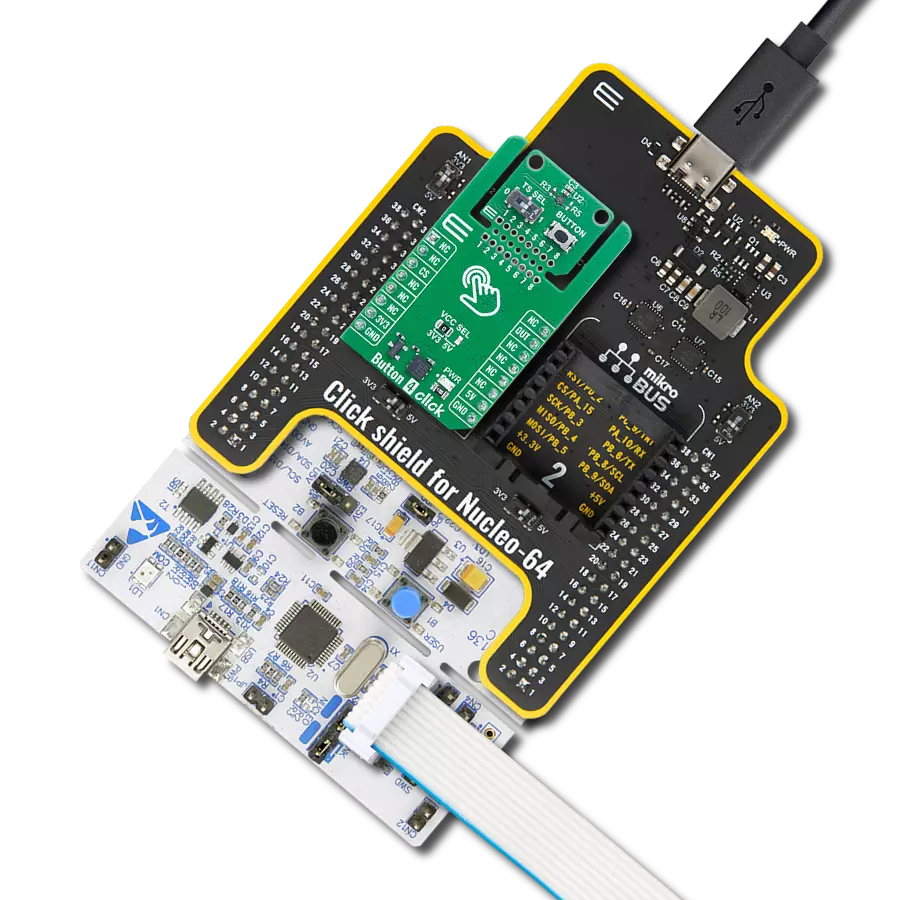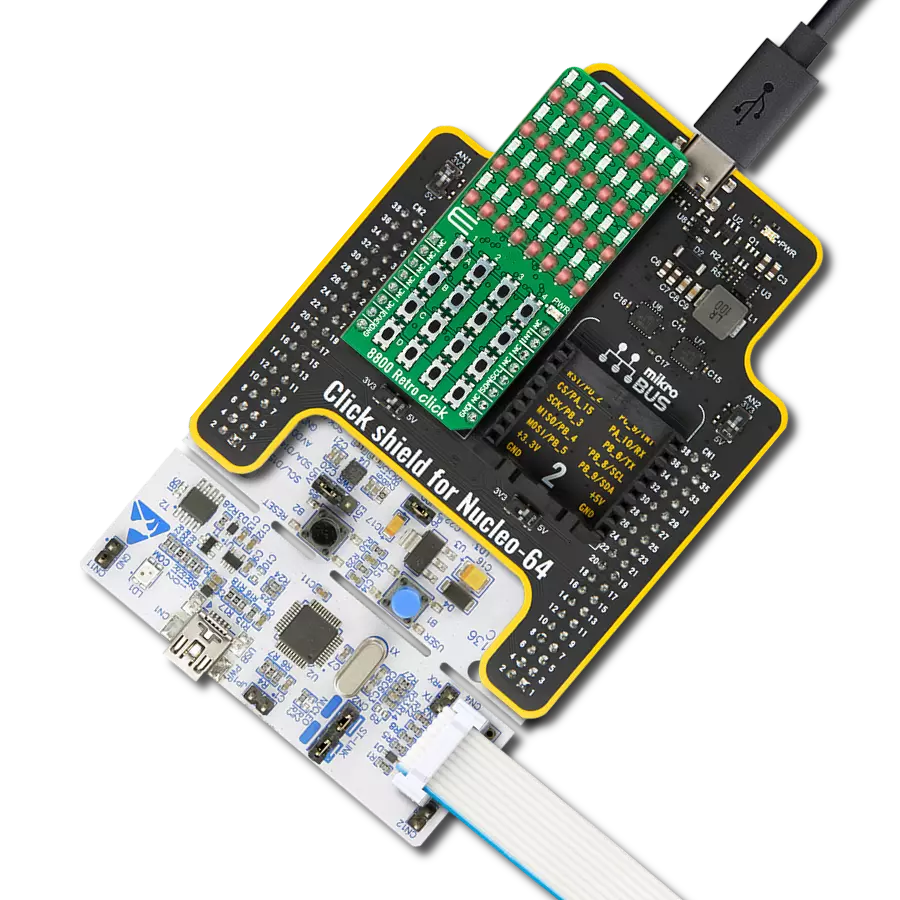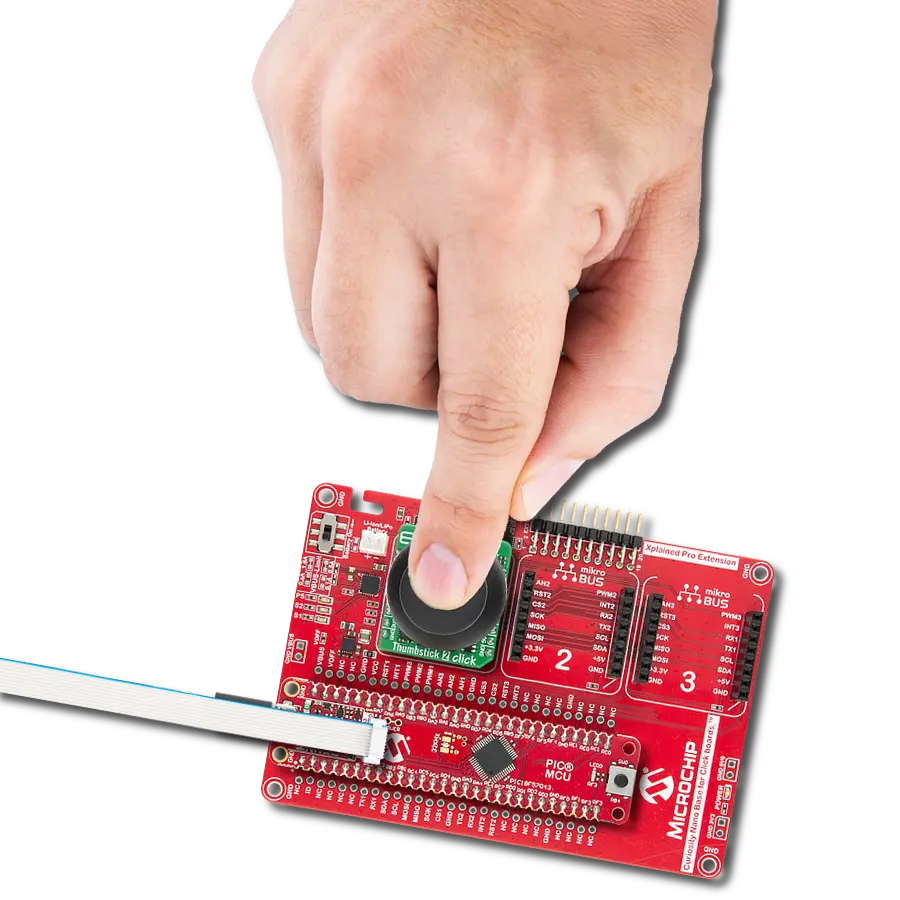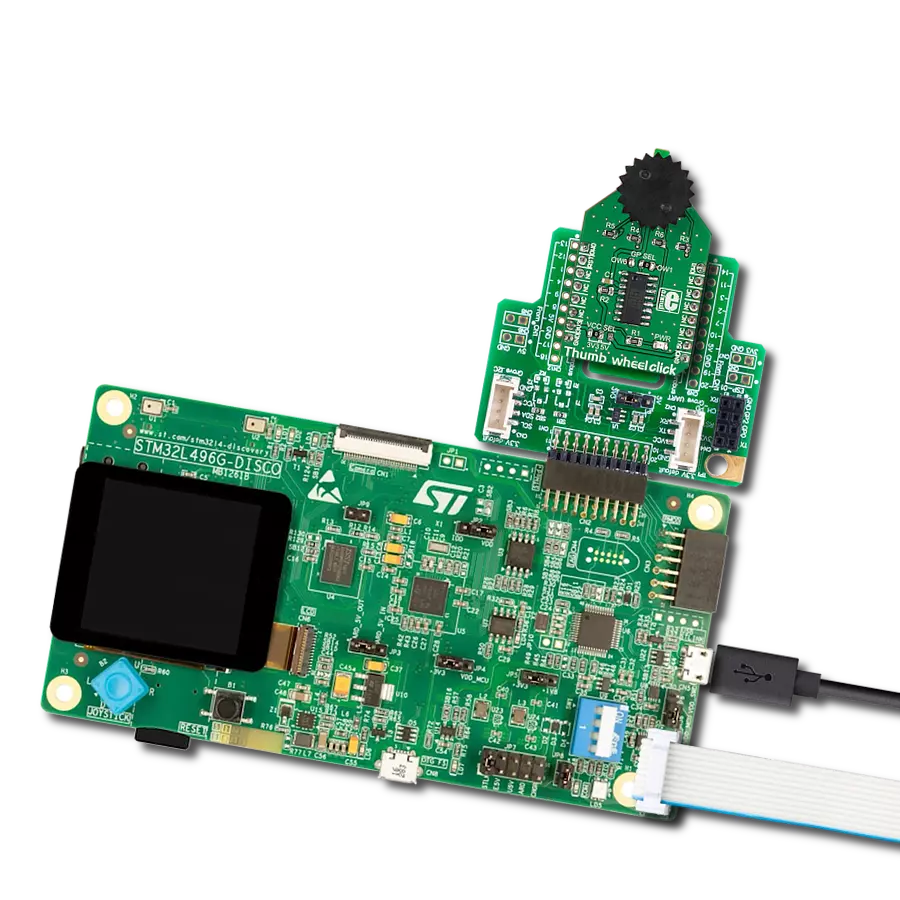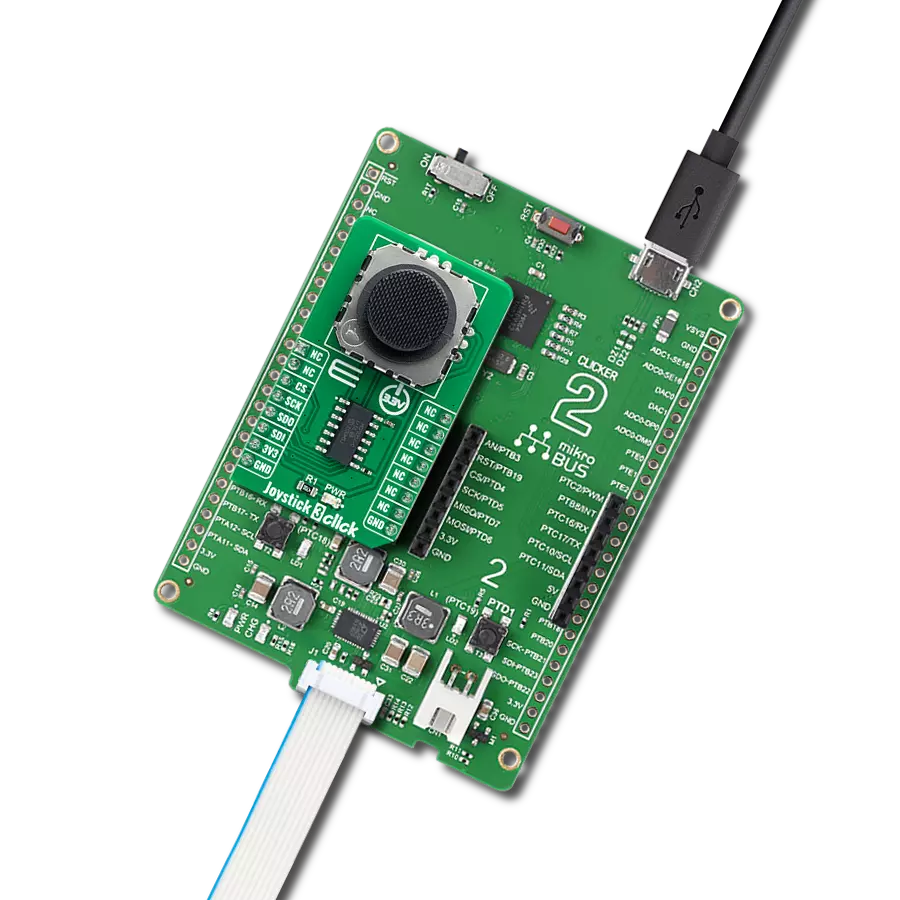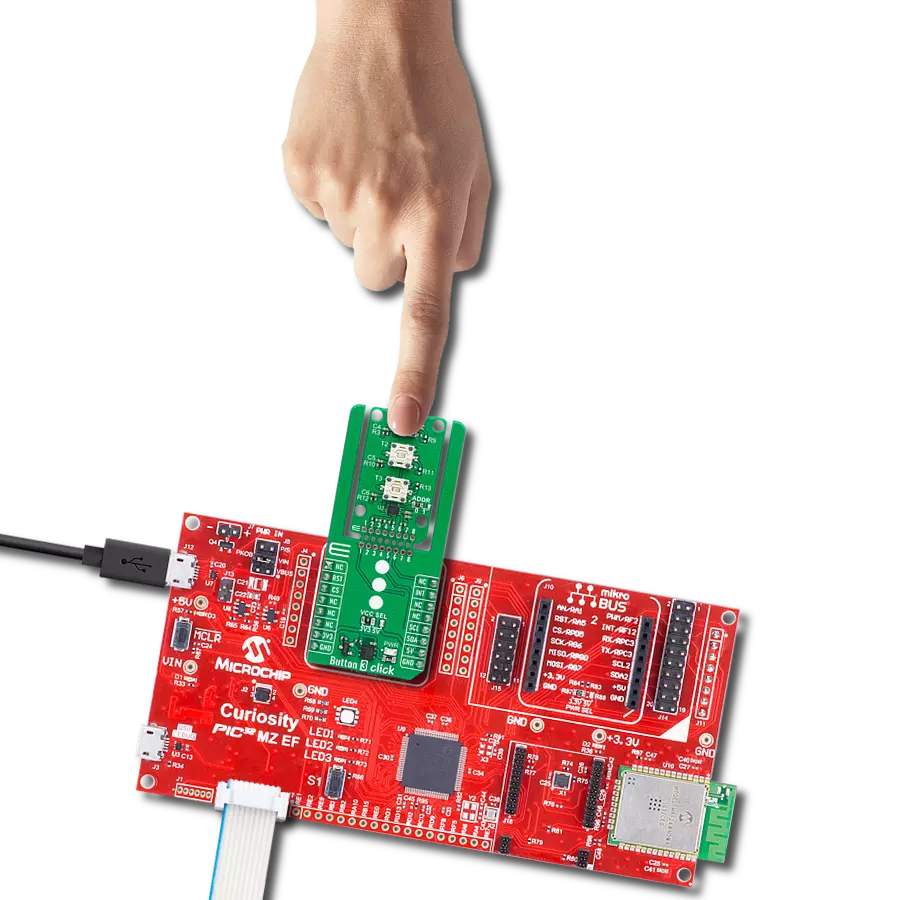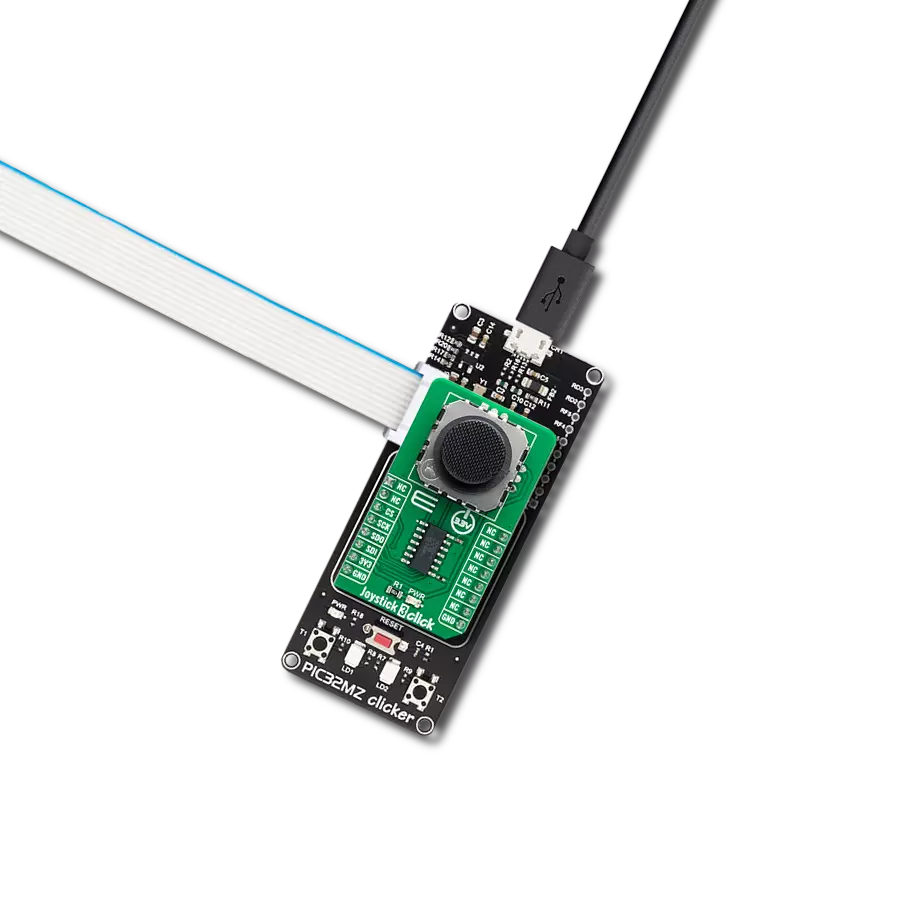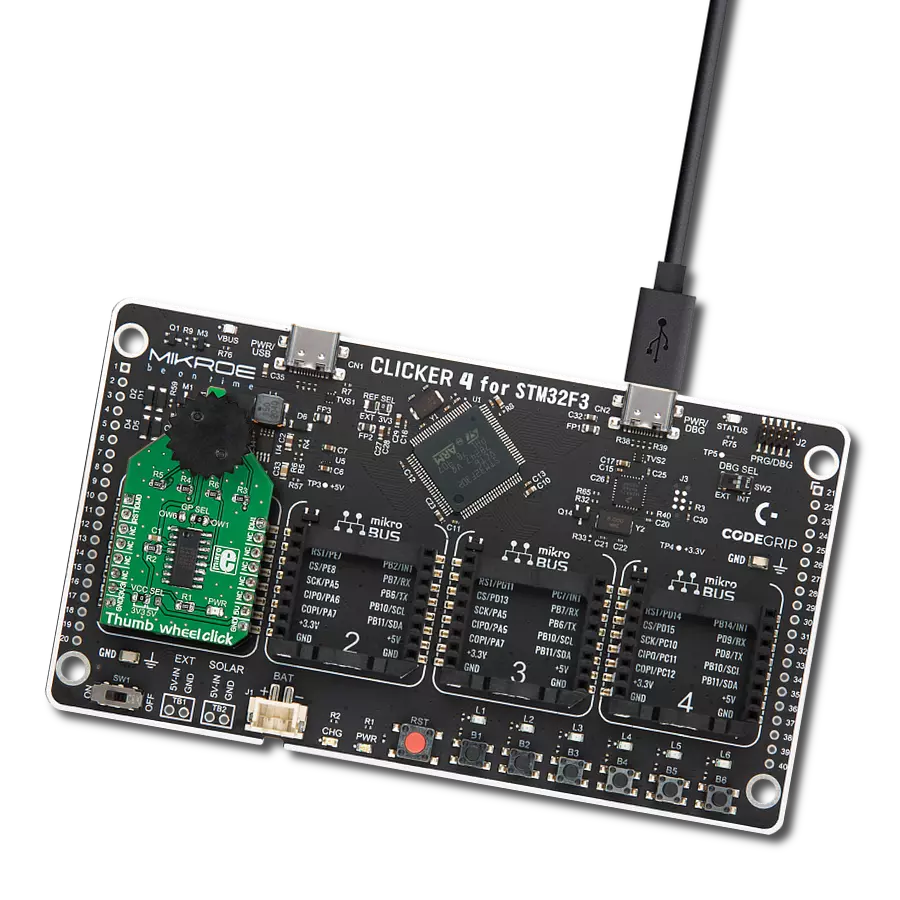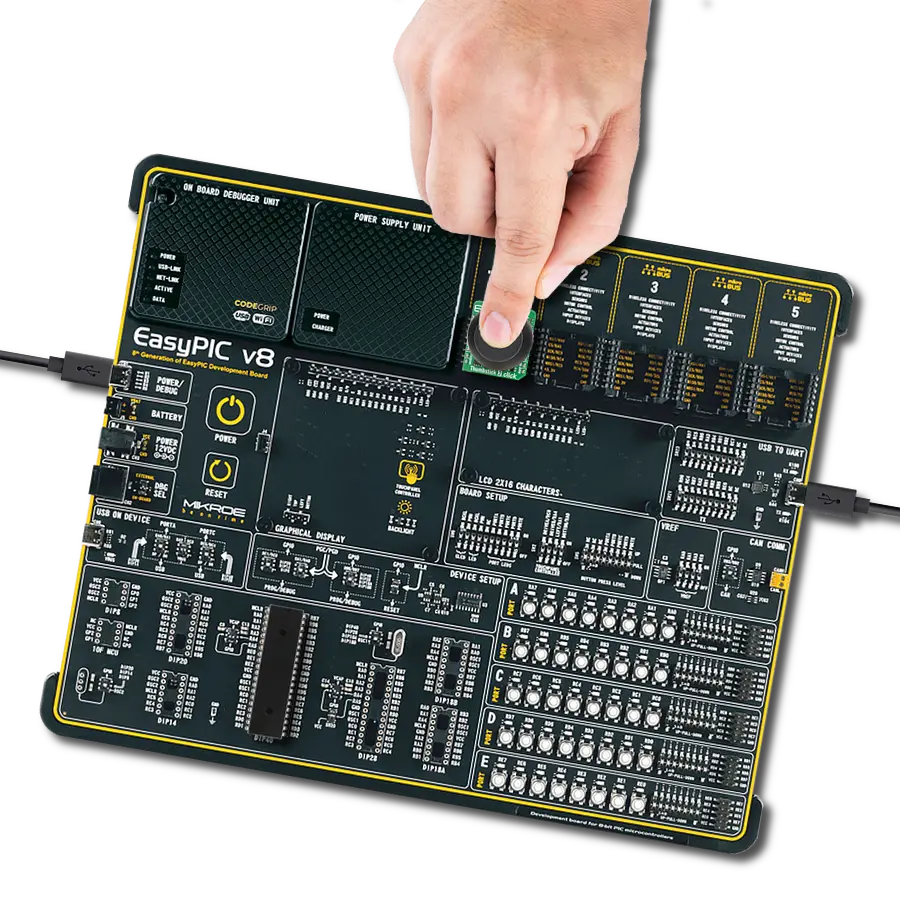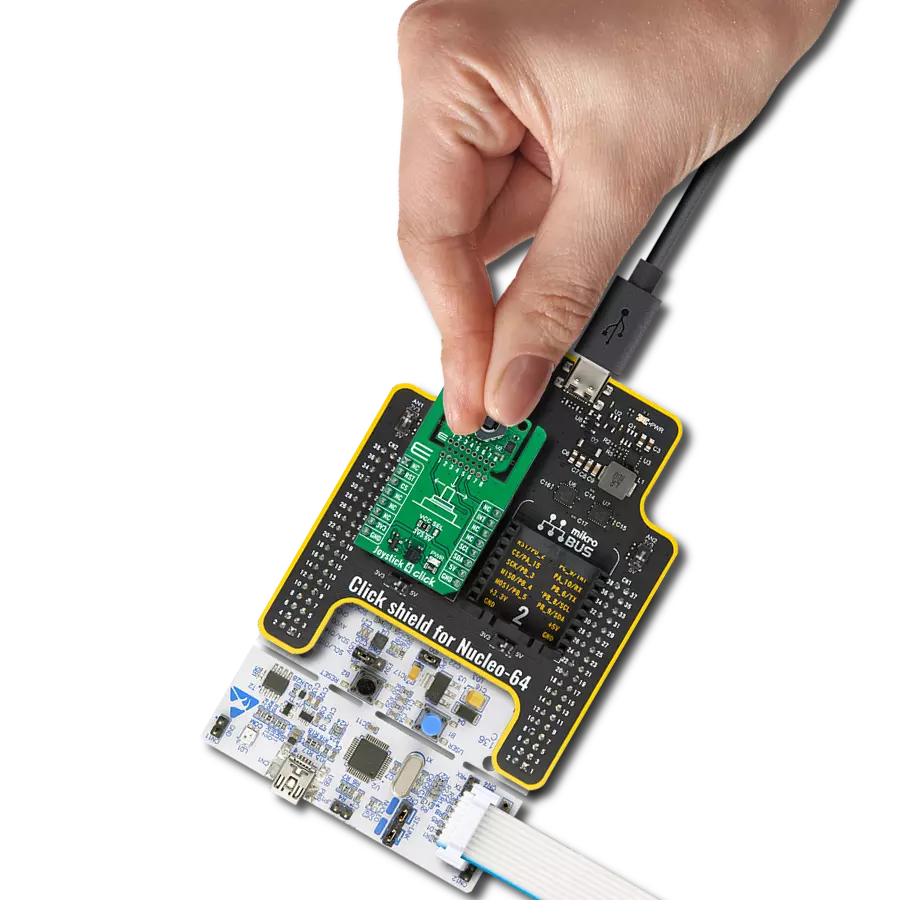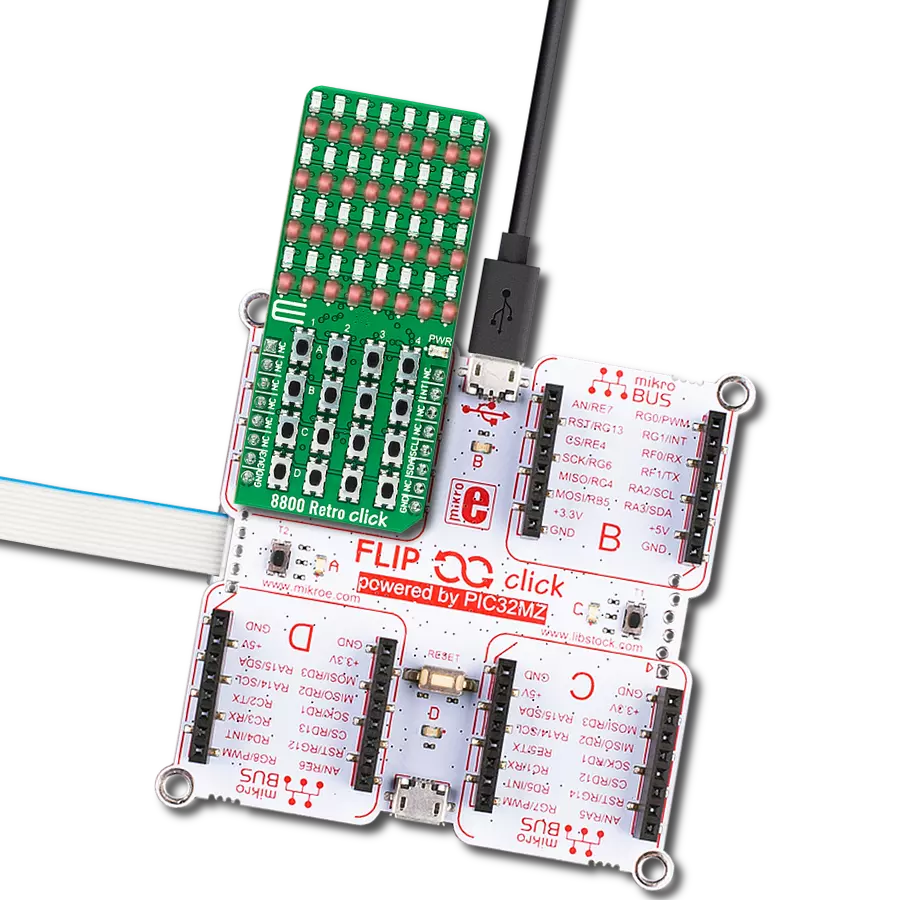Learn how this versatile microswitch unlocks new potential for your projects, allowing you to design solutions that respond to both pressing and releasing actions
A
A
Hardware Overview
How does it work?
Tamper Click is based on the SDS001, low profile side-actuated detect switch from C&K. The switch itself acts as a push button and has 2 NO (Normally Open) terminals, which get shorted when the force is applied to the small piston-shaped button of the switch. These kinds of switches are usually mounted on the edge of the PCB so they can be easily reached by the elements that would apply a pressure to the switch. The applied pressure closes the circuit, connecting the VCC routed to the first pin of the
switch, with the INT pin on the mikroBUS™. The microcontroller is then able to detect a high logical level on the INT pin and the desired task can then be executed. The applied RC filter serves both as a debouncing circuitry and a pull-down for the terminal of the switch, preventing the floating state that way. The used switch itself is intended to operate with digital signal levels, thus its electrical characteristics are tailored for this purpose: low contact resistance of 100mΩ, relatively low contact ratings of 100mA at 12V and 50 000 switching
cycles before the failure. These attributes make it ideal for digital signal applications, specifically. This Click board™ can operate with either 3.3V or 5V logic voltage levels selected via the VCC SEL jumper. This way, both 3.3V and 5V capable MCUs can use the communication lines properly. Also, this Click board™ comes equipped with a library containing easy-to-use functions and an example code that can be used as a reference for further development.
Features overview
Development board
Curiosity PIC32 MZ EF development board is a fully integrated 32-bit development platform featuring the high-performance PIC32MZ EF Series (PIC32MZ2048EFM) that has a 2MB Flash, 512KB RAM, integrated FPU, Crypto accelerator, and excellent connectivity options. It includes an integrated programmer and debugger, requiring no additional hardware. Users can expand
functionality through MIKROE mikroBUS™ Click™ adapter boards, add Ethernet connectivity with the Microchip PHY daughter board, add WiFi connectivity capability using the Microchip expansions boards, and add audio input and output capability with Microchip audio daughter boards. These boards are fully integrated into PIC32’s powerful software framework, MPLAB Harmony,
which provides a flexible and modular interface to application development a rich set of inter-operable software stacks (TCP-IP, USB), and easy-to-use features. The Curiosity PIC32 MZ EF development board offers expansion capabilities making it an excellent choice for a rapid prototyping board in Connectivity, IOT, and general-purpose applications.
Microcontroller Overview
MCU Card / MCU

Architecture
PIC32
MCU Memory (KB)
2048
Silicon Vendor
Microchip
Pin count
100
RAM (Bytes)
524288
Used MCU Pins
mikroBUS™ mapper
Take a closer look
Click board™ Schematic
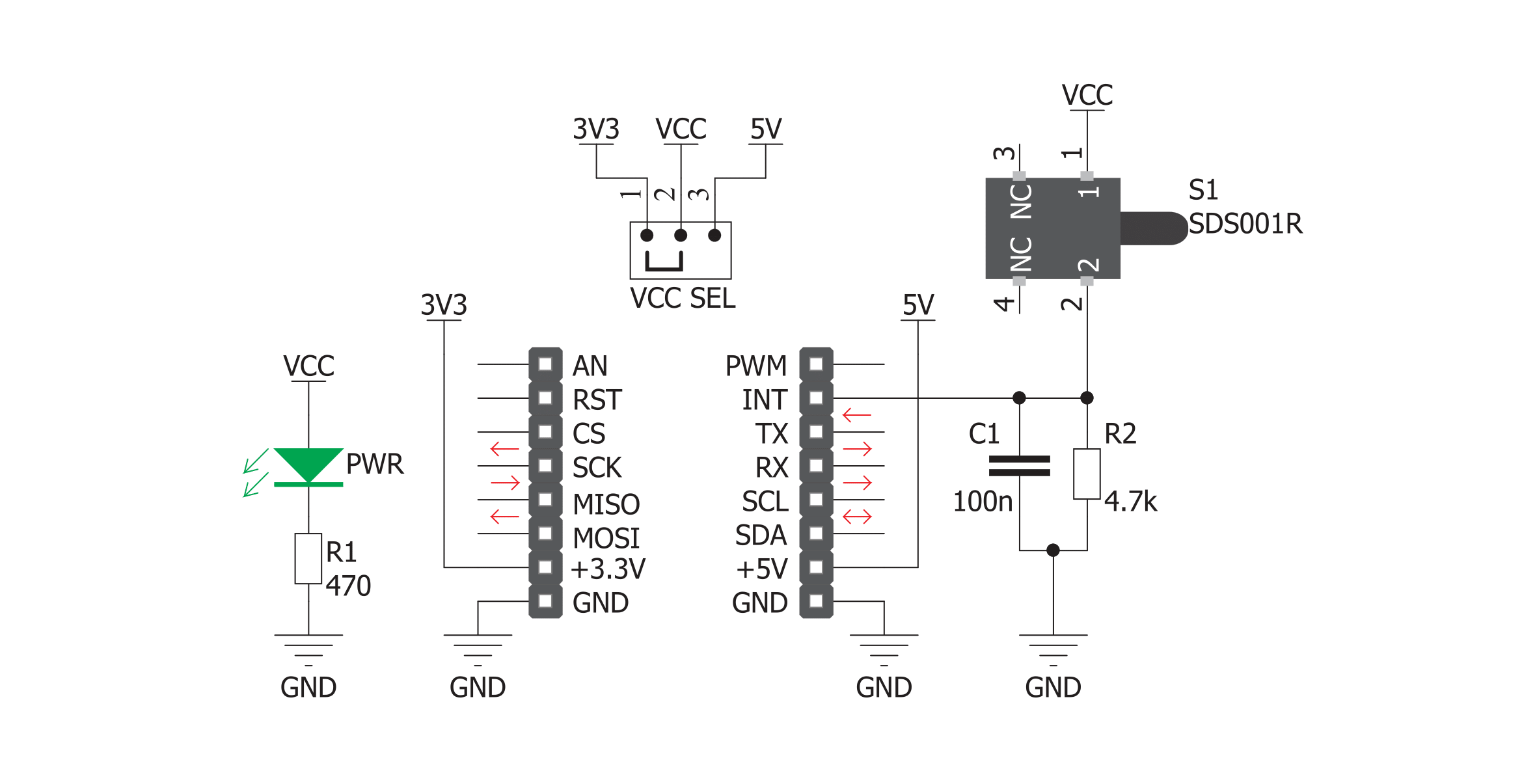
Step by step
Project assembly
Software Support
Library Description
This library contains API for Tamper Click driver.
Key functions:
tamper_state- Function showes the state of the switch
Open Source
Code example
The complete application code and a ready-to-use project are available through the NECTO Studio Package Manager for direct installation in the NECTO Studio. The application code can also be found on the MIKROE GitHub account.
/*!
* \file
* \brief Tamper Click example
*
* # Description
* Tamper Click is equipped with side-actuated detect switch. The switch itself acts as
* a push button and has 2 Normally Open terminals, which get shorted when the force is applied.
* The applied pressure closes the circuit, connecting the VCC routed to the first pin
* of the switch with the INT pin on the mikroBUS. The microcontroller is then able to detect
* a high logical level on the INT pin and the desired task can then be executed.
*
* The demo application is composed of two sections :
*
* ## Application Init
* Initialization driver enables GPIO and also starts write log.
*
* ## Application Task
* This is an example which demonstrates the use of Tamper Click board.
* It detects whether the state of switch on Tamper Click is changes to open or to closed.
* Results are being sent to the Usart Terminal where you can keep track of their changes.
*
*
* \author MikroE Team
*
*/
// ------------------------------------------------------------------- INCLUDES
#include "board.h"
#include "log.h"
#include "tamper.h"
// ------------------------------------------------------------------ VARIABLES
static tamper_t tamper;
static log_t logger;
static uint8_t switch_state = 0;
static uint8_t switch_state_old = 1;
// ------------------------------------------------------ APPLICATION FUNCTIONS
void application_init ( void )
{
log_cfg_t log_cfg;
tamper_cfg_t cfg;
/**
* Logger initialization.
* Default baud rate: 115200
* Default log level: LOG_LEVEL_DEBUG
* @note If USB_UART_RX and USB_UART_TX
* are defined as HAL_PIN_NC, you will
* need to define them manually for log to work.
* See @b LOG_MAP_USB_UART macro definition for detailed explanation.
*/
LOG_MAP_USB_UART( log_cfg );
log_init( &logger, &log_cfg );
log_info(&logger, "---- Application Init ----");
// Click initialization.
tamper_cfg_setup( &cfg );
TAMPER_MAP_MIKROBUS( cfg, MIKROBUS_1 );
tamper_init( &tamper, &cfg );
}
void application_task ( void )
{
switch_state = tamper_state( &tamper );
if ( switch_state == 1 && switch_state_old == 0 )
{
log_printf( &logger, " Closed \r\n" );
log_printf( &logger, "- - - - - - - - -\r\n" );
switch_state_old = 1;
}
if ( switch_state == 0 && switch_state_old == 1 )
{
log_printf( &logger, " Open \r\n" );
log_printf( &logger, "- - - - - - - - -\r\n" );
switch_state_old = 0;
}
}
int main ( void )
{
/* Do not remove this line or clock might not be set correctly. */
#ifdef PREINIT_SUPPORTED
preinit();
#endif
application_init( );
for ( ; ; )
{
application_task( );
}
return 0;
}
// ------------------------------------------------------------------------ END
Additional Support
Resources
Category:Pushbutton/Switches



















